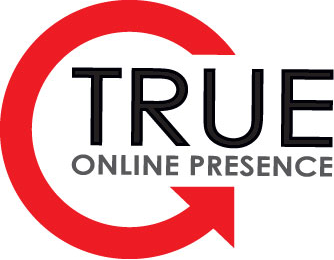Last month, I traveled to Chicago to attend the 2016 Internet Retailer Conference and present on a marketing panel at the Yahoo Small Business Roadshow that preceded the conference. The IRCE event is filled with over 10,000 visitors and hundreds of exhibitors retailing various solutions for small businesses. The Roadshow is a smaller group of successful e-commerce merchants held the day before.
 The Yahoo Small Business Roadshow is a relatively new event. Yahoo Small Business formerly held a Yahoo Summit at their campus in Northern California, but the last couple of years they shifted to doing smaller one day events throughout the country. For this event, Yahoo Small Business group now renamed Aabaco asked me to take part in a marketing panel along with four other industry experts. During the panel, my exclusive focus was Google Shopping and how small business owners can increase profits by properly optimizing.
The Yahoo Small Business Roadshow is a relatively new event. Yahoo Small Business formerly held a Yahoo Summit at their campus in Northern California, but the last couple of years they shifted to doing smaller one day events throughout the country. For this event, Yahoo Small Business group now renamed Aabaco asked me to take part in a marketing panel along with four other industry experts. During the panel, my exclusive focus was Google Shopping and how small business owners can increase profits by properly optimizing.
During the panel, I was asked the following questions:
- In my experience, how does Google Shopping typically perform versus Search?
- How does the shift to now having the majority of searches being done with mobile devices affect Google ads?
- What impact does Google removing their right side text ads have on advertisers?
Here is how I answered:
The first question of Google Shopping vs. Google Search is a question that not only I was asked at the seminar, but also have been asked often by numerous potential and current clients so it was a great question to start with.
Although all verticals are slightly different in their results, typically I have found that most companies can achieve higher profits when properly optimizing Google Shopping compared to Google Search.
The reason for this is two-fold. First, Google Shopping takes more to properly optimize than Search. From properly configuring a Google Merchant Center account to optimizing the data feed to linking an AdWords account to determining a bidding strategy that works, far fewer accounts are properly optimizing for Shopping leaving a great opportunity for those that are able to implement solid techniques. Second, the price per click for Shopping tends to average about half of the CPC for Search. Again, this is likely due to less merchants properly optimizing thus less competition for those potential visitors. I could have gone on with many more reasons this holds true, but I was restricted by time. Fortunately, for those reading this post I am not and have written many articles on properly optimizing shopping in the Google Shopping section of this blog.
The second question was how has the fact that the majority of searches are now being done with mobile devices affect Google ads?
Before I answer, let me confirm that last year for the first time the number of Google searches done from mobile devices did indeed surpass those done from traditional desktop devices and here is what that shift in behavior means for advertisers:
First, it is important for merchants to know what percentage of their visitors are coming from mobile devices and the conversion rates for both organic as well as conversion rates from paid search. It is important for a company to initially address if using paid ads to attract mobile visitors is profitable before determining a strategy for capturing mobile visitors. Second, once it is determined that advertising for mobile users is profitable it is equally important to determine what level of profitability can be achieved through mobile devices.
Google provides tools such as device bid adjustments and the ability to service mobile optimized ads that are essential and require ongoing testing in order to provide profitable results. Therefore, the question of how the increase in mobile searches effects e-commerce merchants is going to depend on the merchant and if they are optimizing their website and advertising for specifically for mobile advertisers. If they are, the shift will lead to greater opportunity for those advertisers using best-practices for mobile.
For more information on optimizing ads for mobile and how to decide whether to use Google AdWords to advertise to mobile users review my blog post, Optimizing Google Ads For Mobile.
The final question I was asked was regarding Google’s recent change to their results interface in their decision to remove right hand side text ads.
As hopefully you are aware if you are currently running Google ads, Google stopped showing right side text ads in February of this year. In addition to removing right side text ads, Google increased the potential number of ads that appear above the organic results from three to four.
 For Google advertisers, it is important to know the ramifications of this change and how it may affect their advertising. Because of this change, it is even more essential that advertisers use highly targeted keywords in order to get the most from their advertising. To do so, advertisers need to know their quality score, have a strategy when determining which keyword match types they are using within their campaigns and make sure that they are fully utilizing all of Google’s ad extensions that are applicable.
For Google advertisers, it is important to know the ramifications of this change and how it may affect their advertising. Because of this change, it is even more essential that advertisers use highly targeted keywords in order to get the most from their advertising. To do so, advertisers need to know their quality score, have a strategy when determining which keyword match types they are using within their campaigns and make sure that they are fully utilizing all of Google’s ad extensions that are applicable.
In addition, Google’s removing text ads from the right side has made Google Shopping ads even more prominent as they are now alone on the right side creating much more focus. In addition, Google has recently been testing showing up to 16 Shopping/PLA ads so it may soon become even more important.
The bottom line with Google’s removal of the right side text ads is that for advertisers currently using best-practices it most likely will end up being a very good thing and quite possibly will help advertising with Google become even more profitable. For those who were not using best-practices and fail to implement, good luck! For those souls, Google advertising will most likely become more expensive and less profitable.
If you are interested in learning more about why Google made the decision to remove right side text ads as well some more detailed information on how advertisers can take advantage for this change, read my post – What Google’s Removing Right Side Text Ads Means For Advertisers.
Summary –
I was honored to be included on the sole marketing panel for the Yahoo Small Business Roadshow. It was a great event and I was able to meet many merchants who are successfully running e-commerce websites. These owners have been able to continue to succeed, some for decades, despite changes from outside competition including Amazon and ongoing changes in marketing platforms they use as well as those they don’t.
The one constant that I found between the successful store owners was that all of them were able to consistently provide their customers with a great experience. If a store owner can do that, then driving traffic to their website whether using Google Shopping, Google Search or other marketing platforms becomes more profitable. However, those that don’t continue to keep updated and implement best-practices when driving web traffic can find their profit margins shrink and will continue to lose business to competitors that successfully implement.
Still need help or looking for someone to bounce ideas off? I am currently offering free marketing discovery sessions to those interested. Call True Online Presence at 1-888-456-6943 or schedule online.
ABOUT THE AUTHOR:
Andy Splichal is an online marketing strategist with more than a decade and a half of experience helping companies increase their online presence and profitable revenues. Although this blog focuses on driving profitable traffic through Google AdWords, True Online Presence offers additional services for lead generation as well as other proven marketing strategies customized for each client.


